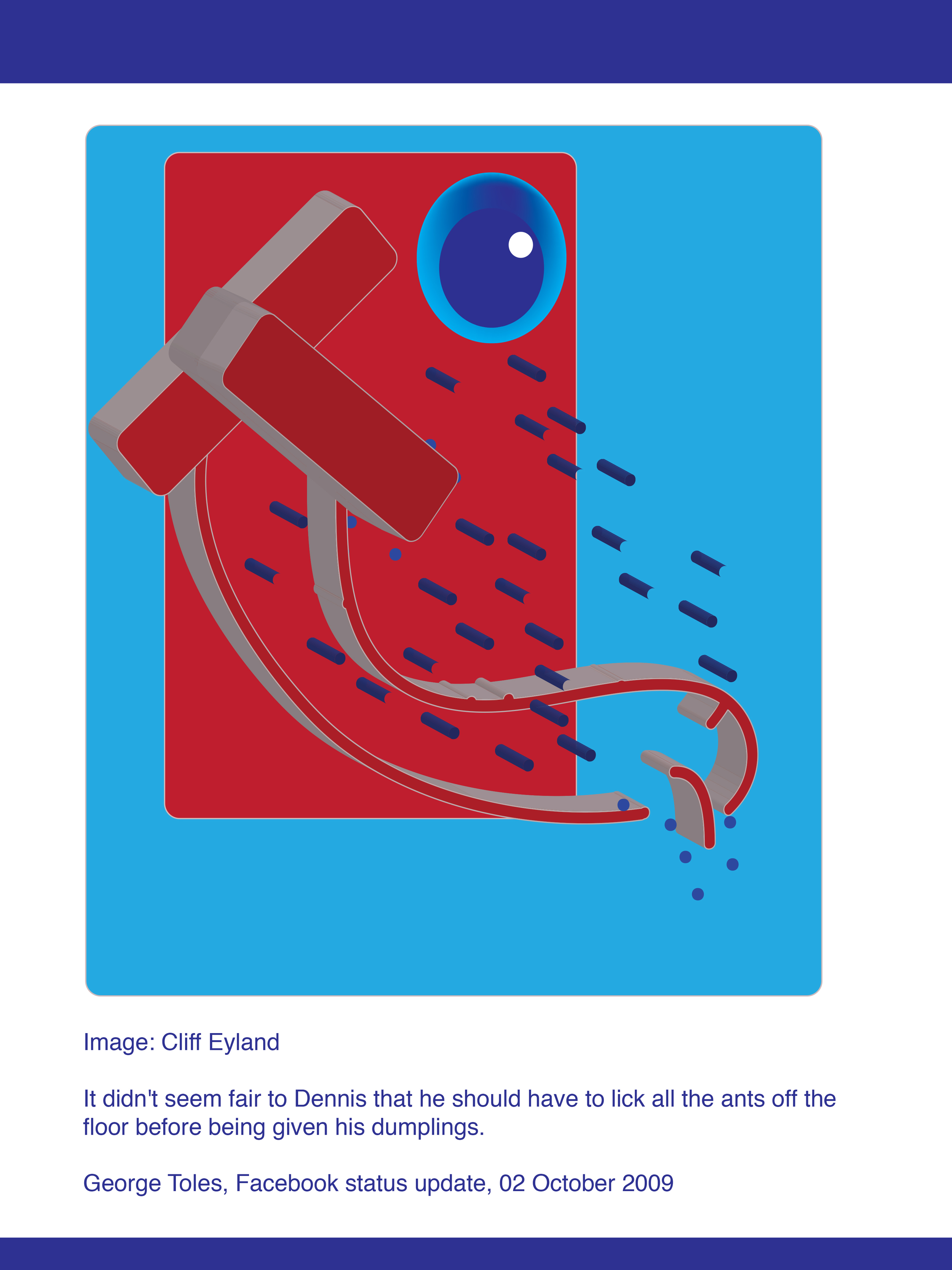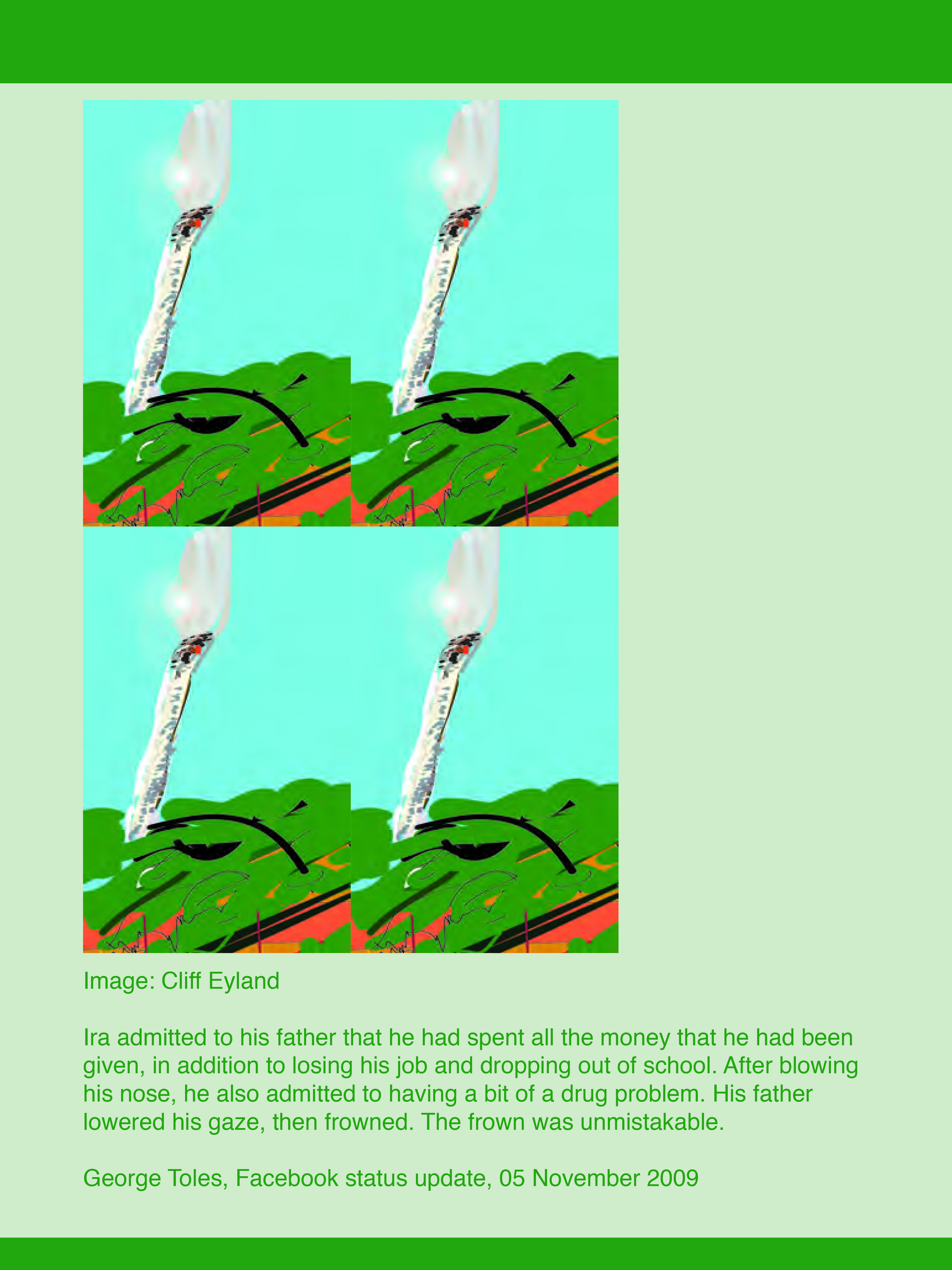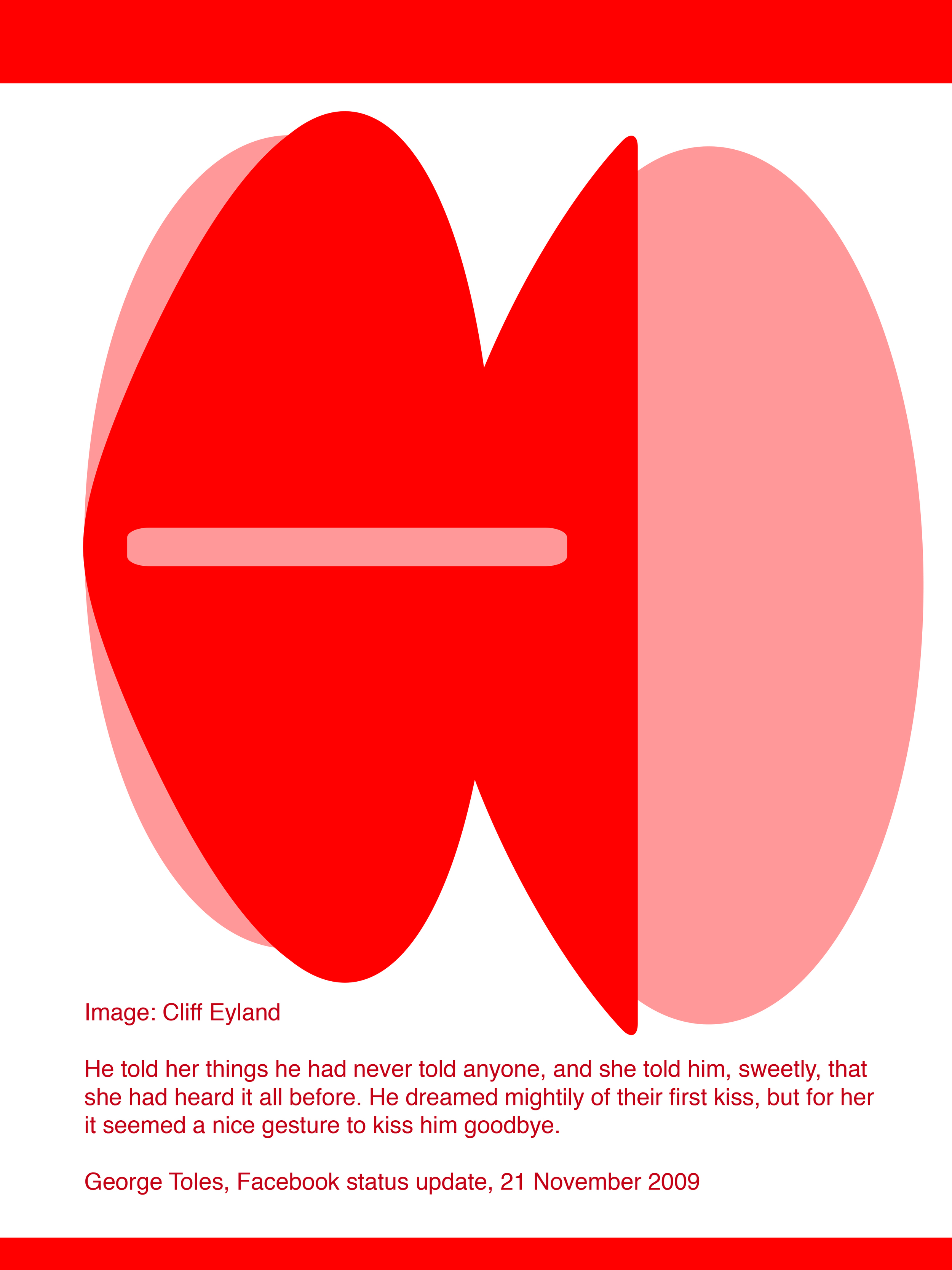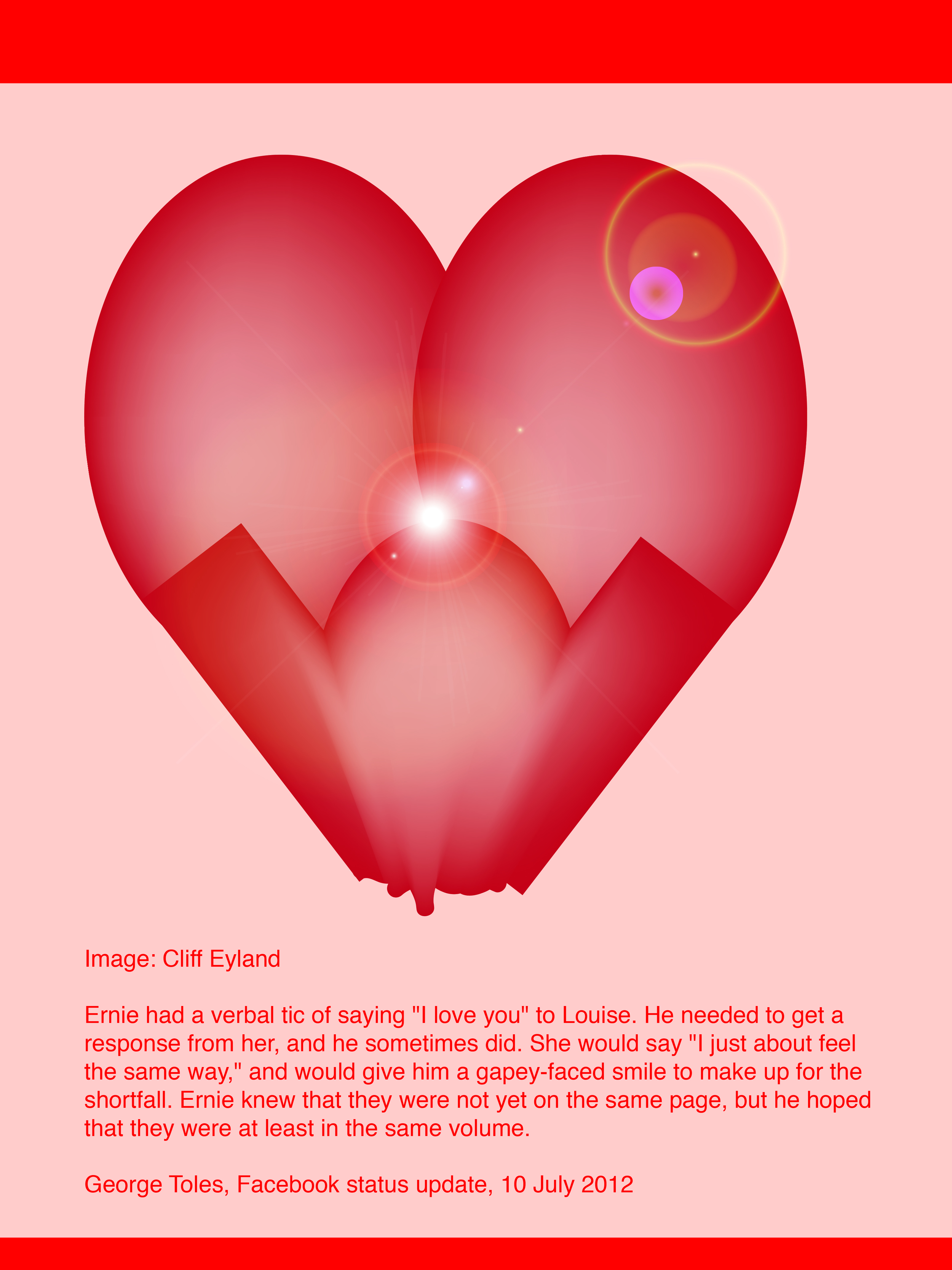CLIFF EYLAND
[This text has been published in many versions since the early 1990s.]
When I was a student at the Nova Scotia College of Art & Design, I made installations of various kinds in the school's library. In 1981 I cut up Arneson's History of Modern Art into file card sized pieces and then spent two months inserting these cards amongst the file cards of the School library's catalogue.
This project had sources in conceptual art, in an early 1960s file card piece by Robert Morris, and in the work of artists who are systematic about what they do like On Kawara and Daniel Buren. The work also had and has to do with the history of painting. The library projects I did at art school reflected my thinking about the organization of art and documentation in libraries and art galleries, and about how libraries work.
Before I had made the piece using the chopped-up art history text, I had begun to use 3"x5" file card sized supports for painting.
As I paint I have always tried to make successful individual works. Afterward I think about the cumulative project which, since 1981, is made up of thousands of paintings and drawings the same size.
Jorge Luis Borges' stories "The Library of Babel" and "Funes the Memorious" had a bearing on my original impulse to make file-card-sized paintings in 1981, but if I once thought of myself as a librarian painter -- maybe one of Borges' "Librarians of Babel" -- I now aspire to Funes' atomized vision of the world, in which things represent each other in a precise way.
The beginning of my work in file card sized paintings and library installations coincided with the historical demise of the library card and the replacement of card catalogues by computers; I don't dwell on the metaphor of a file card sized work as a "library" card when I paint.
Sometimes I think of my individual paintings as being like one Cubist facet broken off from a larger painting the way a hologram breaks up: in a hologram, each fragment contains a whole image. Of course, this "Cubist" thinking does not always extend to the stylistic aspects or content of my individual paintings. Many of my paintings are self-conscious dream-works made with an interest in the history of artists who have worked in the same way.
I try to make a whole image as I paint, a painting which can exist on its own. In contemporary culture we get many "whole" images, but it is difficult to make sense of them. As I continue to paint and draw, I keep in mind that first big project in the N.S.C.A.D. library, as if I am making my own art historical grid.
The small format of my paintings has led me to study, among other subjects, English portrait miniature painting, Indian miniature painting, and the manuscript illuminations of many traditions. This small size has affected the way I look at all art, big and small.
I have made abstract "samples" which resemble tiny excerpts from larger abstract or figurative works or the details of paintings reproduced in conservation books; landscape paintings; figure paintings; portraits; collages with photographs and found objects; paintings and drawings of women I have been close to; many drawings of my parents, sisters and brother and friends.
Once I begin painting using a 3"x5" piece of sanded and primed 1/8th" Masonite and acrylic paint, but more recently I have used thicker MDF panels. I also make many drawings on paper. Sometimes I begin by pasting photographs and other materials on supports; I also make watercolours on watercolour paper. I have glued colour photocopies of paintings onto gessoed wood and painted over them, sometimes with added bits of close-value colour. I keep sketch pads bigger than my favorite format, sometimes cutting a sketch down to size or reducing a drawing by means of photocopy machines. Some paintings are reproduced as black and white or colour photocopies for further painting. Since 1999 I have made computer drawings using the Adobe Illustrator drawing program. (I like the fact that a computer vector drawing has no inherent scale and that, big or small, it has the same high resolution.)
Usually I compose images out of my imagination as I paint and draw. I also paint from life, but more often I work with an image that gets formed before my eyes in the painting without using models of any kind.
I have a discipline about work which permits me to produce art no matter what my circumstances. Sometimes I work on a painting for several years, but sometimes the work congeals into something acceptable in a few minutes. Work on individual paintings is absorbing enough for me to quickly forget that my 3"x5" format never changes.
I never forget that this project is absurd. There is negation in my work, a Dada impulse that grows out of my veneration for a fractured European tradition that includes everything from Renaissance art to Marcel Duchamp.
The paintings are given titles (or not) after they are made. I often group works thematically for exhibitions. I have also made new versions of paintings to illustrate poems and stories. (Although I rarely accept illustration commissions, I am interested in challenging high art proscriptions against illustration.)
Titles are always post-facto things, and the uses I put paintings to in exhibitions are also post-facto. For me, the work of public display and interpretation is curatorial work, whether I do it or someone else does it. Arranging my paintings in an exhibition is an opportunity for work on other levels. I have encouraged curators to show the work in ways that interest them: Susan Gibson Garvey at Dalhousie Art Gallery in Halifax once showed all the paintings in their storage cabinets. Michael Lawlor of Struts Gallery in Sackville, New Brunswick, jammed the paintings together on one wall; in Saint John's, Newfoundland, Marlene Creates placed the paintings in Eastern Edge Gallery above and below eye level. I usually show the paintings unframed along one line at eye level, with generous space around them, but I have also installed the paintings in other ways, for example as points on a wall, or even as captions to works by other people, as I did in 1994 in an exhibition at the Confederation Centre Art Gallery & Museum and in 2000 at the Art Gallery of Nova Scotia.
To request a catalogue of additional works, please contact us at info@gurevichfineart.com.

















